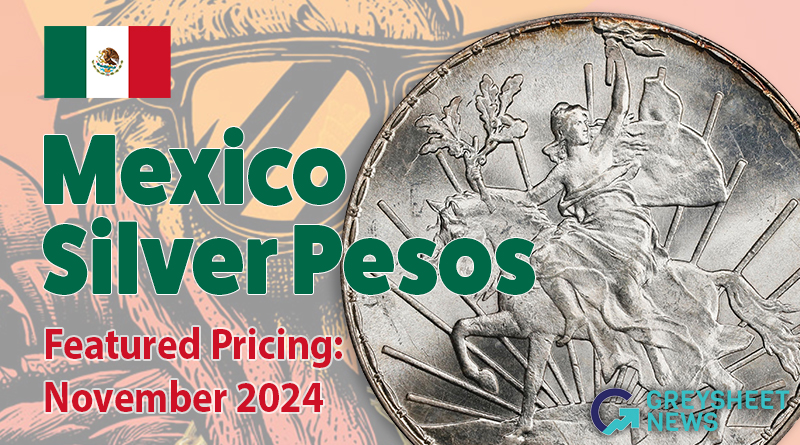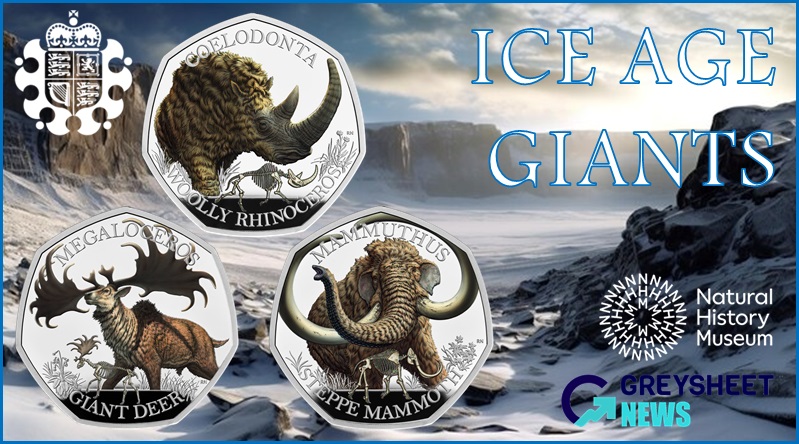- World Coins /
- Austria /
- Austria /
- 2012 100 Eu Proof PR
2012 100 Eu Proof PR
Greysheet Catalog Details (GSID: 219773)
Reverse: The reverse of the coin features a depiction of Emperor Francis Joseph I in the imperial robes of the Austrian Empire. The image is based on a painting by Julius Viktor Berger, which currently hangs in the Vienna Supreme Court of Justice. The Emperor is depicted with the richly embroidered robe, and over his shoulders is the mantle of the Austrian Empire made of white silk, red velvet and ermine. On the left side of the mantle are four elaborately decorated orders of the House of Habsburg. From the heavy gold chain across his chest hangs the Order of the Golden Fleece. He is holding the Imperial spectre which, similar to the Imperial crown, is decorated with enamel and set with precious stones and pearls. The Imperial crown rests on a lush cushion in the lower right side of the coin design field, while in the background is the double-headed eagle insignia of the Austrian Imperial dynasty. This reverse was engraved by mint engraver Helmut Andexlinger. Helmut did give the Emperor a slightly more friendly look in the coin portrait than in the original painting. Helmut found it “very challenging” to carry out the very lengthy engraving work and execute the significant number of very fine details to eventually be included on a coin that has a diameter of only 30 mm. The Habsburg dynasty, which lasted over 800 years, did not believe that coronations were necessary because it was a hereditary right. The Imperial Crown and the robes were used for the ceremonial investiture rather than a coronation. The Imperial crown of Austria was originally the personal crown of Rudolf II and crafted in 1602. It is considered one of the best European examples of the art of goldsmithing of this time. Jan Vermeyen of Antwerp was summoned to Prague to craft this very elaborate pure gold crown. Fortunately, this spectacular crown was not dismantled after the death of Rudolf II but succeeded to exist in regal splendour to this day. It is kept in the Imperial Treasury or Schatzkammer located in the Imperial Palace in the center of the city of Vienna. The order of the Golden Fleece is one of the most prestigious orders of Europe, (the other being England’s Order of the Garter) founded by Duke Philip and Princess Isabella of Portugal on the occasion of their marriage in 1430. The order still exists today and the current head is Karl Habsburg-Lothringen. Other members today include fellow royals from Europe. The Order of the Golden Fleece was restricted to a limited number of knights. The power of the Order of the Golden Fleece was mighty with the king, who was also the sovereign head of the order, consulting with the members of the order before going to war, and deciding on most corner stone strategic moves of a kingdom. As well, performance of members was also critically reviewed by fellow knights, and punishment was meted out when deemed necessary and signed off on by 6 fellow knights
Catalog Detail
Search the Greysheet Catalog
Related Stories (powered by Greysheet News)
View all newsAbout CDN Prices
All CDN prices are based on proprietary market knowledge and technology developed by CDN Publishing, LLC.
CPG® prices represent retail levels. Collectors should refer to CPG values as a starting place for their negotiations, or auction bid reference.
Greysheet/Greensheet prices are wholesale market levels for collectible coins/paper money intended to indicate what a dealer, or wholesale, buyer would pay for the described item in the specified grade. Greysheet/Greensheet represent "sight-seen" values based on a buyer's in-hand review. The actual value can be more or less than this depending on factors including eye appeal and market timing.
Bluesheet (NGC & PCGS) prices represent the highest sight-unseen offers to buy on dealer networks like CDN Exchange. In many cases, there are no active sight-unseen buy offers, so CDN looks to the recent lowest market values for such an item. For this reason, Bluesheet values typically represent the floor of the market for the specified item. CDN only tracks Bluesheet on certain items.
CAC prices are for U.S. coins that meet the standards of the Certified Acceptance Corporation. You can learn more about CAC on their web site.
Price movement is indicated for price changes in the last 30 days.
The prices listed in our database are intended to be used as an indication only. Users are strongly encouraged to seek multiple sources of pricing before making a final determination of value. CDN Publishing is not responsible for typographical or database-related errors. Your use of this site indicates full acceptance of these terms.



 Dealers Only
Dealers Only







